Craig Venter reclines in his chair, puts his feet up on his desk and – gently stroking his milk chocolate-coloured miniature poodle, Darwin, asleep in his arms – shares his vision of the household appliance of the future. It is a box attached to a computer that would receive DNA sequences over the internet to synthesise proteins, viruses and even living cells.
It could, for example, fill a prescription for insulin, provide flu vaccine during a pandemic or even produce phage viruses targeted to fight antibiotic-resistant bacteria. It could help future Martian colonists by giving them access to the vaccines, antibiotics or personalised drugs they needed on the red planet. And should DNA-based life ever be found there, a digital version could be transmitted back to Earth, where scientists could recreate the extraterrestrial organism using their own life-printing box.
"We call it a Digital Biological Converter. And we have the prototype," says Venter. I am visiting the office and labs of Venter's company Synthetic Genomics Incorporated (SGI) in La Jolla, a wealthy seaside enclave north of San Diego, California, where he also lives, because the pioneering American scientist dubbed biology's "bad boy" wants to talk about his new book, released this week.
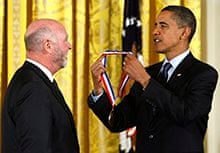
The west coast office of the J Craig Venter Institute (JCVI), his not-for-profit research institute whose research discoveries the company takes forward, is a five-minute drive away. Darwin's squeaky toys litter the floor and Venter's wife Heather Kowalski, who is also his publicist, sits within earshot, her legs tucked under her on a sofa. The walls are covered in awards, including his highest honour so far – his 2008 National Medal of Science award (America's most prestigious scientific prize, bestowed by the president) for his dedication to advancing the science of genomics (the study of the genomes of organisms) and for his work in understanding and communicating its implications. The professional prizes are mixed in with sailing pictures and paraphernalia.
The book, Venter's second after his 2007 autobiography, is called Life at the Speed of Light: From the Double Helix to the Dawn of Digital Life. It looks at the future Venter is aiming to create through his scientific endeavours in synthetic biology, a kind of turbo-charged version of genetic engineering where scientists design new biological systems – even synthetic life – rather than just tweaking existing organisms by inserting a gene here or there.
In 2010, Venter grabbed the attention of headline writers and scientists around the world by announcing what he calls the "world's first synthetic life". He took a synthetic bacterial genome constructed from chemicals in the laboratory and, as Venter puts it, "booted it up" by inserting it into a living single-celled bacterium. The cell replicated itself into a colony of organisms containing only the synthetic DNA.
"It is like a whole new concept of life that until our experiment, no one had," he says. It was later reviewed by the Presidential Commission for the Study of Bioethical Issues, which gave it the green light and recommended self-regulation by synthetic biologists.
Venter, who has a reputation for arrogance, uses his book to describe the nearly 15 years of scientific work that led up to his 2010 breakthrough. It also positions that work at the pinnacle of years of landmark discoveries by the biggest names in biology.
A reader could be forgiven for thinking the book is really aimed at the Nobel prize committee, but Venter claims he just wants more people to understand him. "One of the motivations for the book is to put this in a historical context because of all the confusion out there when we did it," he says. "I think the work that we have done with the first genome in history, the human genome and with the first synthetic cell is certainly of the world calibre that obviously earns big prizes. Nobel prizes are very special prizes and it would be great to get one. The book is not a campaign to get one." Venter also wants people to know about what's coming next – the futuristic home gadget he is building and how it could allow what Venter calls "biological teleportation".

The way he sees it, making a digital copy of an organism's DNA in one place and sending the file to a device somewhere else that can then recreate the original life-form is not so different from the sci-fi ideal of teleportation where matter moves from place to place in an instant (in the style of "Beam me up, Scotty"). It is just that it was never envisioned this way.
Venter's isn't the only recent book by a leading scientist in the field to make wild claims about synthetic biology's future. Last year, George Church of Harvard proposed in his own book, Regenesis, that Neanderthals might be resurrected with the help of an "extremely adventurous female human". But Venter, who dismisses Church's idea as "fanciful" in his book, tells me that his bold ideas are different because here in La Jolla they are becoming real. "Mine is not a fantasy look at the future," says Venter, "The goal isn't to imagine this stuff. We are the scientists actually doing this."
Patrick McCray, a historian of science at the University of California, Santa Barbara, calls Venter a "visioneer": a scientist who has not only a clear, big and somewhat hubristic view of the future and his role in it but the technical knowhow to make it happen along with the skills to bring money and people to their ideas. "He is no armchair futurist," he says.
Paul Freemont at Imperial College London admits he can't think of a scientist with a bigger ego, but believes it is important to have people like Venter, who doesn't sit in the mainstream scientific establishment. "It invigorates the rapidity of our development and makes public funders aware of things that they are perhaps a bit slow to be aware of," he says.
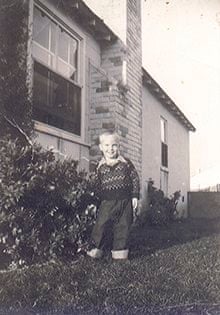
John Craig Venter was born in 1946 in Salt Lake City, Utah, but grew up in San Francisco's Bay Area. After scraping through high school, he moved to southern California to devote his life to the pleasures of surfing, only to be drafted into the Vietnam conflict. It was during those years that Venter the drifter gave way to Venter the over-achiever. Venter served in a navy field hospital caring for wounded soldiers before returning to the US to attend community college, transferring to University of California, San Diego, where he received an undergraduate degree in biochemistry and a PhD in physiology and pharmacology. He believes he has the shortest PhD on record for the University of California: "Just about three years and I published 21 scientific papers."
Academic and research appointments followed, including at the US National Institutes of Health, where Venter developed a new strategy for rapidly discovering genes. But being a cog in a larger machine rankled, and in 1992 he founded his own non-profit research institute, The Institute for Genomic Research (later absorbed into the JCVI). In 1995, Venter's team unveiled the first complete genome sequence of a free-living organism, the bacterium Haemophilus influenzae. It was made possible by a technique of Venter's invention for rapidly reading the code of DNA sequences, called shotgun sequencing.
Venter earned his bad boy tag in 1998, when he created a new company, Celera Genomics, to try and beat the publicly funded effort to becoming the first to sequence the human genome. The $5bn public project was already three years in but had an estimated seven more to go. Venter said Celera would use shotgun sequencing and other new techniques to get the job done in only three years. With some in academia fearing Venter would be able to use patents to lock up access to vital information about human biology, the public project frantically reorganised and a scientific race ensued. Finally, after three years of very unfriendly competition, both efforts jointly announced that the genome had been mapped in 2000.
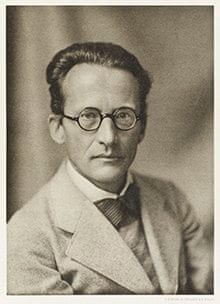
"Some of those people still hate me today," says Venter. "I tipped the system over and that $5bn was going to be the gravy train for a lot of people for a very long time." He now dismisses the achievement that may yet earn him a Nobel prize as just a "three-year diversion" from his life's true work on making synthetic life. The first major breakthrough from that line of work came in 2003, when Venter's team made simple virus Phi X 174 synthetically. In 2008 he synthesised the genome of a bacteria that infects the human urinary tract, Mycoplasma genitalium. Finally, in 2010 Venter announced that he had made the first synthetic bacterial cell.
Venter is clearly still annoyed by the reception his 2010 result received from some fellow scientists, who argue that he had not created his life "from scratch" because he had used an existing, natural cell to "boot up" the artificial genome. "You see that statement over and over – but what does that even mean?" Venter asks, using the analogy of baking a cake to try to dismiss his sceptics. A baker who starts with flour, sugar, and eggs gets credit for his creation, not accusations that he should have begun with atoms and molecules. Besides, he adds, once the original cell reproduced, the question should be considered settled. "We did rely on pre-existing life as the 'boot-up' system for the chromosome," he says, but then it took over and started running the cell to its own specifications. "In what we call the synthetic cell there is not a single molecule of the original form there – it is like converting you into a frog."
Venter thinks that with the 2010 announcement he finally answered the question posed by physicist Erwin Schrödinger in his 1944 book written for the lay reader – and of which Venter owns a first edition – What is Life? "Life is a DNA software system," says Venter. All living things are solely reducible to DNA and the cellular apparatus it uses to run on. The DNA software both creates and directs the more visible "hardware" of life such as proteins and cells.
With that question settled, says Venter, it's clear that if you give an organism new software by rewriting its genome, you have rewritten the software and life itself. He dismisses his scientific critics who say there is more to remaking life than creating DNA molecules as guilty of a kind of modern day vitalism, the pre-scientific notion that an intangible something sets life apart from other things made from atoms and molecules.
Although Venter works on single cells, he says he believes it holds true for even the most complex organisms. "I can't explain consciousness yet, but like anything else it will be explainable at the molecular level, the cellular level and therefore the DNA coding level."
Another common complaint about his 2010 work – that it shows the scientist is intent on "playing God", Venter seems happy to embrace. "In the restricted sense that we had shown with this experiment how God was unnecessary for the creation of new life, I suppose that we were," he writes. "We now have a set of tools that never existed before to play 'creator'," he says.

Venter's current project, the Digital Biological Converter or DBC, is his attempt to put those tools into one convenient box. The current prototype is supported by the US Department of Defence's research agency Darpa and is eight feet long and six feet high. "We have teams working to minimise it, make it faster and more reliable," says Venter, who sees the devices – which Synthetic Genomics will sell – in hospitals, workplaces and homes. A major test of the prototype DBC's capabilities is planned before the end of the year.
The current prototype can produce only DNA, not proteins or living cells, but even that could be enough to make the device practical. Some vaccines are made using just DNA molecules, points out Venter. "If there is a pandemic, everyone around you is dying and you cannot go outdoors, you can download the vaccine in a couple of seconds from the internet," he says. That digital file would allow DBCs in homes, hospitals and companies to "just spit out a loaded syringe". His researchers believe their current prototype is already capable of producing DNA precisely enough that it could be used as a vaccine.
Venter also sees a DNA-printing version of his device helping with more regular medical care. It could print out the DNA that encodes the hormone insulin so important to diabetics he says. Adding that DNA to a protein synthesis kit, a tool that is commonplace in research labs around the world, would produce the finished treatment for injection. Venter also has the antibiotics crisis in his sights. Before penicillin, it was common in Russia and eastern Europe to treat some infections using naturally occurring viruses, known as bacteriophages or phages, that killed the bacteria responsible. The DBC could bring back so-called phage therapy and make it more effective, says Venter. "The future will be that if you have a [bacterial] infection you quickly get its genome sequenced – that will take minutes – and in a very short period of time we could design a phage that would attack just that bacteria very specifically," he says. Because of the way phages attack their bacteria victims, making just the DNA of the one a person needs is enough, says Venter. "The DNA is the drug that kills the bacteria."
Looking further ahead, Venter intends DBCs to print living cells, using an automated and improved version of the process behind his 2010 breakthrough synthetic cell. Work on that is currently underway, with the focus on creating what he calls the "universal recipient cell", a kind of biological blank slate able to receive any synthetic genome and come to life. "We have to engineer it but we think it is do-able," says Venter. It would mean the possibility of ready access to new cells which currently Venter, in other arms of his work along with others, is currently trying to engineer to produce necessities such as therapeutics, food, fuel and clean water. Their genomes could be made available to be downloaded and printed on DBCs around the world.
In parallel to the development of the DBC, Venter's scientists are also working on a machine called the "digitised life sending unit", intended to complete his vision of an end-to-end system for biological teleportation. The sending unit's job is to sample robotically, sequence a genome from the sample, and generate a digital DNA file that is then sent to a DBC to recreate the original life in a new location.
It's a project that has attracted the support of Nasa, which doubtless hopes that future robotic Mars missions could pack a digitised-life-sending unit so that any Martian microbes discovered could have digital copies of their genomes sent back to Earth. No prototype of the device is yet ready, but Venter has JCVI scientists working in California's Mojave desert trying to work out how a robot could autonomously isolate microbes from soil and sequence their DNA.
Venter believes that scientists using a DBC on Earth equipped with the universal recipient cell could then re-create a Martian organism in a maximally-contained laboratory. "Having alien species being beamed back here and being recreated does sound like science fiction but it is potentially real," says Venter, who argues that approach would be far cheaper than trying to bring a sample back to Earth and come with much less risk of contaminating our planet.
Venter believes that any humans that make the trip to the red planet will be packing one of his DBCs, enabling them to receive supplies such as vaccines, antibiotics and cells that become new food sources. "The distances are too great to do it any other way," he says. "My friend Elon Musk and others are determined to colonise Mars in the not to distant future," he says, dropping the name of the billionaire founder of PayPal who leads both electric car maker Tesla and private rocket company SpaceX.
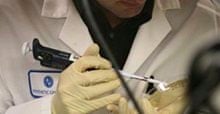
As to whether we will ever be biologically teleporting humans, Venter gives the notion short shrift. "That is not going to happen any time that we know of ... They are two different worlds and two different scales and the science isn't anywhere remotely supportive of that any more than it is recreating a Neanderthal with a willing woman."
Venter believes he is able to envision and ultimately achieve such big goals because he has escaped the narrow-mindedness of academic science. He thinks the scientific establishment would get more done if it adopted his way of doing things.
"The trouble is the field of science, medicine, universities, biotech companies – you name it – have been so splintered, layers, sub-divided, hacked that people can spend their entire career studying one tiny little cog of life," he says, "If I could change the science system my prescription for changing the whole thing would be organising it around big goals and building teams to do it. That is what we do – I have created team science versus the university system with 200 prima donnas each with their own little space."
Interview over we leave Synthetic Genomics main building and take a short drive in Venter's 1996 Aston Martin – Venter collects car and motorbikes – through the Synthetic Genomics campus and down past his algae greenhouses (where Venter's scientists are experimenting with the cells of the future) to our destination: Venter's new DNA synthesis factory. The dog, Darwin, who has travelled down separately with Kowalski, also joins us for the tour.
Inside the gleaming building, only six months old, white-coated technicians work with liquid-handling robots which pipette chemicals and enzymes to fill customers orders for pieces of synthetic DNA (pharmaceutical and agricultural companies are the main ones so far). Other companies also synthesise DNA commercially, but Venter's is making the largest and most complex.Then someone mentions the DBC. "Should I show it to her ... we have part of it here?," one of the lab managers asks Venter. Looks are exchanged. However, it is clearly not in Venter's master plan for today.
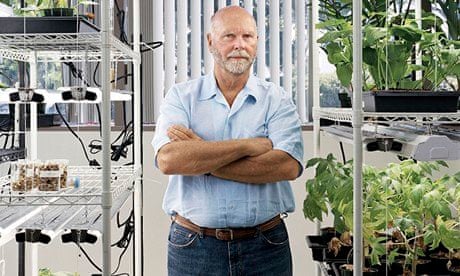







Comments (…)
Sign in or create your Guardian account to join the discussion